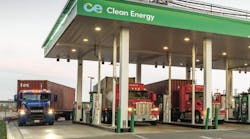Everyone wants to operate in a safe manner and most fleets go to great lengths to develop safety programs to keep their drivers, technicians, other employees and the general public safe.
A well-thought out and executed safety plan can also help fleets reduce their insurance premiums. Insurance companies look favorably on fleets that work to reduce risk by having an extensive formalized safety program in place.
The Occupational Safety and Health Administration (OSHA), the Department of Transportation (DOT), and the Environmental Protection Agency (EPA), all have rules and regulations that must be followed. In addition, there may be state and municipal laws governing workplace safety.
Many of the agencies that govern workplace safety are concerned that employees are kept up-to-date on the latest safety practices and some require that facilities be inspected on a regular basis to make sure they are in compliance with existing regulations.
Safety should be everybody’s responsibility, but one way to ensure that you stay current with all safety regulations and practices is to hold managers accountable for safety. Task them with conducting monthly safety inspections and with disseminating all necessary safety related information to their employees.
Twice a year have them perform more in-depth safety audits to ensure all the I’s are dotted and T’s crossed as far as safety and compliance is concerned. Provide them with the necessary forms that cover the key aspects of your safety program. Have them look at items such as the condition of equipment, the condition of the location, whether paperwork is being properly completed, etc.
Make sure when you are developing the manager’s appraisal form that you include expectations about safety performance. During the manager’s annual appraisal period, review the safety performance of their department or area of responsibility. You can rate their performance as excellent, satisfactory or unsatisfactory. Consider tying it to incentive compensation.
Reward those managers who are doing the right things when it comes to safety and provide additional training for those who fail to meet the goals you have set for them.
When safety is tied in with a manager’s performance it becomes part of their job responsibility and is more likely to get the on-going attention it deserves.
Safety is more than a bumper sticker or a T-shirt, it has to part of the culture.


